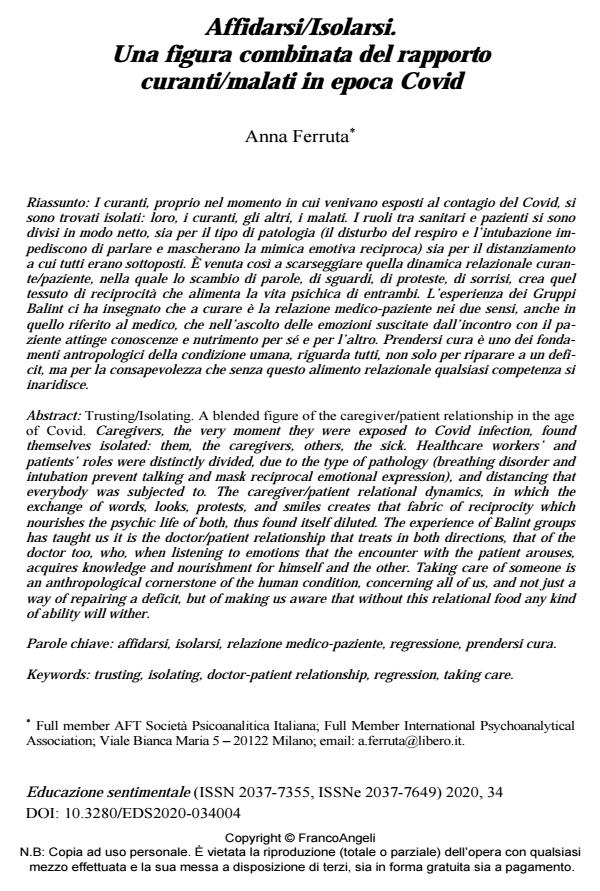Affidarsi/Isolarsi. Una figura combinata del rapporto curanti/malati in epoca Covid
Journal title EDUCAZIONE SENTIMENTALE
Author/s Anna Ferruta
Publishing Year 2021 Issue 2020/34
Language Italian Pages 9 P. 39-47 File size 246 KB
DOI 10.3280/EDS2020-034004
DOI is like a bar code for intellectual property: to have more infomation
click here
Below, you can see the article first page
If you want to buy this article in PDF format, you can do it, following the instructions to buy download credits

FrancoAngeli is member of Publishers International Linking Association, Inc (PILA), a not-for-profit association which run the CrossRef service enabling links to and from online scholarly content.
Trusting/Isolating. A blended figure of the caregiver/patient relationship in the age of Covid. Caregivers, the very moment they were exposed to Covid infection, found themselves isolated: them, the caregivers, others, the sick. Healthcare workers’ and patients’ roles were distinctly divided, due to the type of pathology (breathing disorder and intubation prevent talking and mask reciprocal emotional expression), and distancing that everybody was subjected to. The caregiver/patient relational dynamics, in which the exchange of words, looks, protests, and smiles creates that fabric of reciprocity which nourishes the psychic life of both, thus found itself diluted. The experience of Balint groups has taught us it is the doctor/patient relationship that treats in both directions, that of the doctor too, who, when listening to emotions that the encounter with the patient arouses, acquires knowledge and nourishment for himself and the other. Taking care of someone is an anthropological cornerstone of the human condition, concerning all of us, and not just a way of repairing a deficit, but of making us aware that without this relational food any kind of ability will wither.
Keywords: Trusting, isolating, doctor-patient relationship, regression, taking care.
Anna Ferruta, Affidarsi/Isolarsi. Una figura combinata del rapporto curanti/malati in epoca Covid in "EDUCAZIONE SENTIMENTALE" 34/2020, pp 39-47, DOI: 10.3280/EDS2020-034004